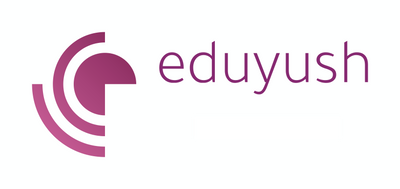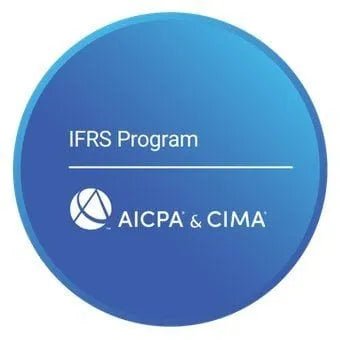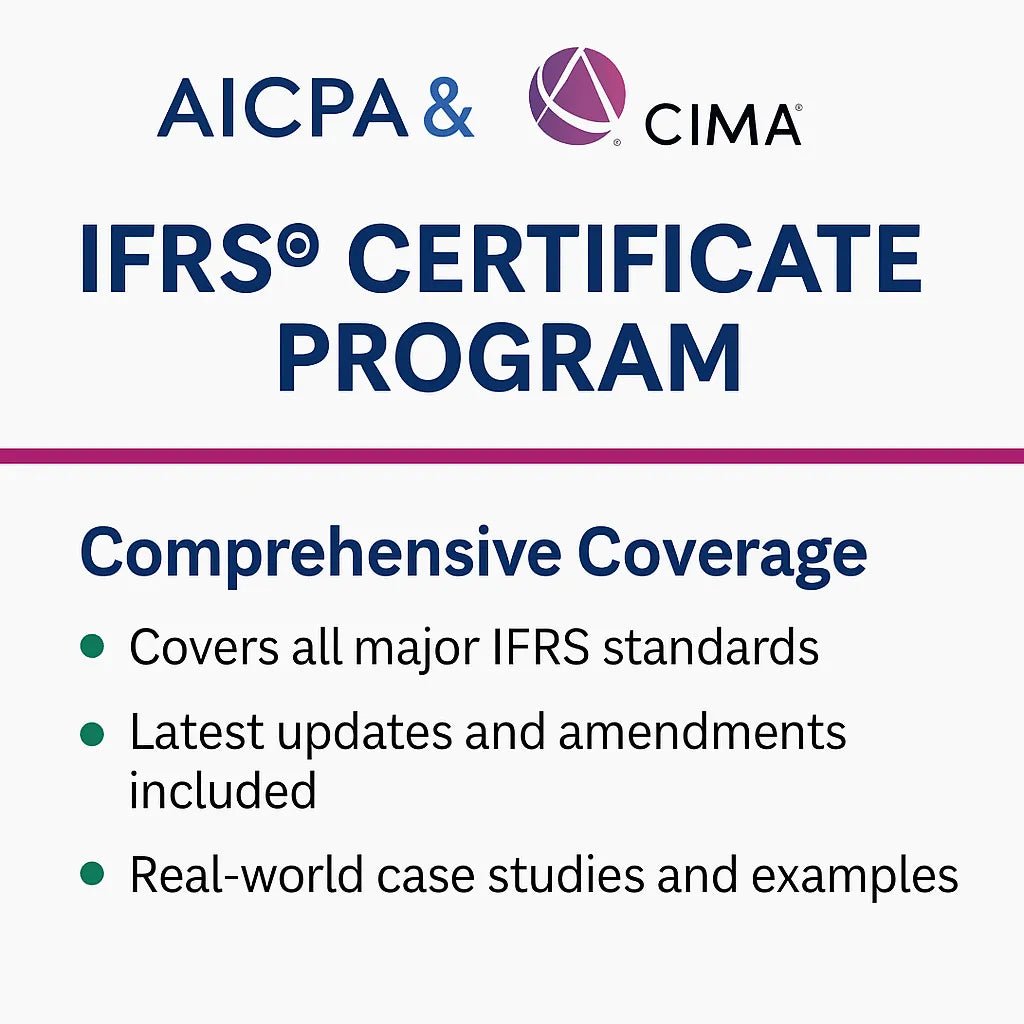50 IFRS 18 Practice Questions with Answers
🎯 Master IFRS 18: 50 Practice Questions Every Student Should Know
🌟 IFRS 18 practice questions: Ready to Test Your Financial Statement Presentation Knowledge?
Whether you're preparing for exams, job interviews, or just want to solidify your understanding of IFRS 18, practice makes perfect! These 50 carefully crafted questions cover everything from the new statement of profit or loss structure to management-defined performance measures.
💡 How to Use This Guide:
- ✅ Try answering each question first
- ✅ Then check the solution and explanation
- ✅ Focus extra time on areas where you struggled
- ✅ Use these as flashcards for quick review
Master IFRS 16: 50 Practice Questions on Lease Accounting & ROU Assets
📚 BASIC CONCEPTS (IFRS 18 Practice Questions 1-15)
Question 1 📊
IFRS 18 becomes effective:
A) January 1, 2025
B) January 1, 2026
C) January 1, 2027
D) January 1, 2028
✅ Answer: C
Explanation: IFRS 18 "Presentation and Disclosure in Financial Statements" becomes effective for annual reporting periods beginning on or after January 1, 2027, with early application permitted.
Master IAS 16: 50 Practice Questions on PPE, Depreciation & Revaluation
Question 2 🎯
IFRS 18 replaces:
A) IFRS 15 Revenue from Contracts with Customers
B) IAS 1 Presentation of Financial Statements
C) IAS 7 Statement of Cash Flows
D) IFRS 9 Financial Instruments
✅ Answer: B
Explanation: IFRS 18 replaces IAS 1 "Presentation of Financial Statements" as the primary source of presentation and disclosure requirements in IFRS.
Master IFRS 17: 50 Practice Questions on Insurance Contracts & CSM
Question 3 🏪
The five categories for income and expenses under IFRS 18 are:
A) Revenue, expenses, assets, liabilities, equity
B) Operating, investing, financing, income taxes, discontinued operations
C) Current, non-current, contingent, off-balance sheet, fair value
D) Direct, indirect, variable, fixed, other
✅ Answer: B
Explanation: IFRS 18 requires all income and expenses to be classified into one of five categories: operating, investing, financing, income taxes, and discontinued operations.
Question 4 ⚖️
The new mandatory subtotals required by IFRS 18 include:
A) Gross profit only
B) EBITDA and EBIT
C) Operating profit and profit before financing and income taxes
D) All of the above
✅ Answer: C
Explanation: IFRS 18 requires specific subtotals including "operating profit or loss" and "profit or loss before financing and income taxes" (with some exceptions for entities with specific main business activities).
Master IFRS 9: 50 Practice Questions on ECL, Classification & Hedging
Question 5 🏢
Operating profit under IFRS 18 is:
A) Defined consistently across all entities
B) Left to management discretion
C) The same as EBITDA
D) Optional to present
✅ Answer: A
Explanation: IFRS 18 provides a defined calculation for operating profit, ensuring consistency and comparability across entities, unlike the previous diverse practices under IAS 1.
Question 6 🏦
Management-defined performance measures (MPMs) are:
A) Required by IFRS 18
B) Subtotals of income and expenses used in public communications that reflect management's view of performance
C) The same as IFRS-defined subtotals
D) Not subject to audit
✅ Answer: B
Explanation: MPMs are subtotals of income and expenses (not specified by IFRS) that are used in public communications outside financial statements and communicate management's view of financial performance.
Question 7 🏗️
Under IFRS 18, which items are typically classified in the investing category?
A) Revenue from customers
B) Share-based payment expense
C) Returns from investments and results of associates/joint ventures
D) Interest on trade payables
✅ Answer: C
Explanation: The investing category includes returns from investments, results of associates and joint ventures (unless measured at FVTPL and investing is a main business activity), and gains/losses on derecognition of investments.
Question 8 💰
For entities where providing finance to customers is a main business activity:
A) All financing costs go to financing category
B) Some financing income/expenses may be classified as operating
C) They are exempt from IFRS 18
D) They use a different statement structure
✅ Answer: B
Explanation: Entities with financing customers as main business activity may classify income/expenses from financing customers and related financing activities in the operating category.
Question 9 🔄
Aggregation and disaggregation under IFRS 18:
A) Is unchanged from IAS 1
B) Focuses on grouping items with shared characteristics
C) Requires all items to be shown separately
D) Is optional guidance
✅ Answer: B
Explanation: IFRS 18 provides enhanced guidance on aggregation and disaggregation, focusing on grouping items with shared characteristics to provide useful information.
Question 10 📈
When entities present operating expenses by function, IFRS 18 requires:
A) No additional disclosures
B) Disclosure of specific operating expenses by nature
C) Restatement by nature instead
D) Board resolution approval
✅ Answer: B
Explanation: When presenting by function, entities must disclose in the notes the amounts for specific operating expenses by nature (depreciation, amortization, employee benefits, impairment, inventories recognized as expense).
Question 11 🎨
The financing category typically includes:
A) All interest income and expenses
B) Income/expenses from liabilities arising from financing activities
C) Operating lease payments
D) Pension costs
✅ Answer: B
Explanation: Financing category includes income and expenses from liabilities that arise from activities involving only the raising of finance, plus related foreign exchange differences.
Question 12 ⚠️
For entities using the indirect method for cash flows, IFRS 18:
A) Prohibits this method
B) Requires starting with operating profit subtotal
C) Allows any starting point
D) Requires direct method instead
✅ Answer: B
Explanation: Under IFRS 18, entities using the indirect method for operating cash flows must start with the operating profit subtotal, not profit before tax.
Question 13 🏪
MPM disclosures must include:
A) Only the calculation method
B) Reconciliation to most directly comparable IFRS subtotal, explanation of usefulness, and calculation method
C) Historical trends only
D) Competitor comparisons
✅ Answer: B
Explanation: MPM disclosures require: (1) reconciliation to most directly comparable IFRS subtotal, (2) explanation of how the measure provides useful information, and (3) explanation of how it's calculated.
Question 14 📊
Unusual income and expenses under IFRS 18:
A) Must be disclosed separately
B) Have no specific disclosure requirement
C) Must be excluded from operating profit
D) Require board approval
✅ Answer: B
Explanation: IFRS 18 removes the specific requirement to disclose unusual items, instead relying on general materiality and aggregation/disaggregation principles.
Question 15 🔍
IFRS 18 applies to:
A) Public companies only
B) All entities applying IFRS
C) Banks and insurers only
D) Listed entities only
✅ Answer: B
Explanation: IFRS 18 applies to all entities preparing financial statements in accordance with IFRS Accounting Standards, regardless of size or listing status.
🏭 PRACTICAL APPLICATIONS (Questions 16-35)
Question 16 📱
A manufacturing company has these items. Which goes in the operating category?
A) Share of profit from joint venture
B) Gain on disposal of subsidiary
C) Revenue from sale of goods
D) Interest on bank borrowings
✅ Answer: C
Explanation: Revenue from sale of goods is clearly operating. Share of profit from joint venture goes to investing (unless investing is main business activity), disposal gain goes to investing, and interest on borrowings goes to financing.
Question 17 🏠
Bank with financing customers as main business activity. Interest income from customer loans is classified as:
A) Operating
B) Investing
C) Financing
D) Depends on loan type
✅ Answer: A
Explanation: For entities where providing finance to customers is a main business activity, income from financing customers can be classified in the operating category.
Question 18 💳
Company reports "Adjusted EBITDA" in earnings releases. This is considered an MPM if:
A) It's used in public communications and represents management's view of performance
B) It's calculated using IFRS standards
C) It's the same as required subtotals
D) It's used internally only
✅ Answer: A
Explanation: MPMs are subtotals used in public communications that convey management's view of financial performance and are not specified by IFRS standards.
Question 19 🏢
Investment fund with investing as main business activity. Fair value gains on investments are classified as:
A) Investing
B) Operating
C) Financing
D) Other comprehensive income
✅ Answer: B
Explanation: For entities where investing in assets is a main business activity, returns from investments (including fair value changes) are classified in the operating category.
Question 20 💼
Company presents expenses by function (cost of sales, administrative, etc.). Under IFRS 18, they must also disclose:
A) Employee benefits, depreciation, amortization, impairment, inventories by nature
B) All expenses by nature
C) Detailed cost breakdowns
D) Management salaries
✅ Answer: A
Explanation: When presenting by function, IFRS 18 requires disclosure of specific expenses by nature: employee benefits, depreciation, amortization, impairment of non-financial assets, and inventories recognized as expense.
Question 21 🌾
Foreign exchange gain on trade receivables should be classified as:
A) Operating
B) Investing
C) Financing
D) Other comprehensive income
✅ Answer: A
Explanation: Foreign exchange differences on items classified in operating (like trade receivables) are also classified in operating, following the classification of the underlying item.
Question 22 🏗️
Share-based payment expense is typically classified as:
A) Operating
B) Investing
C) Financing
D) Equity
✅ Answer: A
Explanation: Share-based payment expense relates to compensation for services and is typically classified in the operating category.
Question 23 💰
Company changes its MPM calculation method. IFRS 18 requires:
A) Retrospective restatement
B) Explanation of the change in the MPM note
C) Approval from auditors
D) No specific disclosure
✅ Answer: B
Explanation: When an entity changes the calculation of an MPM, introduces a new measure, or removes a previously disclosed measure, it must provide an explanation in the MPM note.
Question 24 🔄
Dividends received from equity investments (not associates/JVs) are classified as:
A) Operating
B) Investing
C) Financing
D) Depends on business model
✅ Answer: B
Explanation: Dividends from equity investments are returns from investments and are classified in the investing category (unless the entity's main business activity is investing).
Question 25 🏦
Insurance company with investing as main business activity. Investment income is:
A) Always investing category
B) Operating category
C) Split between operating and investing
D) Financing category
✅ Answer: B
Explanation: For insurers where investing in assets is a main business activity, investment income and expenses are classified in the operating category.
Question 26 📊
Tax expense on items in investing category should be:
A) All classified as income taxes
B) Allocated to the investing category
C) Classified as operating
D) Presented in OCI
✅ Answer: A
Explanation: All income tax expense and income are classified in the income taxes category, regardless of which category generated the underlying income or expense.
Question 27 🎯
Company acquires subsidiary and pays acquisition costs (legal, due diligence). These costs are classified as:
A) Operating
B) Investing
C) Financing
D) Capitalized as goodwill
✅ Answer: B
Explanation: Transaction costs related to business combinations are investing activities as they relate to acquiring control of another entity.
Question 28 🏪
Impairment loss on goodwill should be classified as:
A) Operating
B) Investing
C) Financing
D) Extraordinary item
✅ Answer: A
Explanation: Impairment of goodwill relates to the entity's operations and is classified in the operating category.
Question 29 💡
"Profit before financing and income taxes" subtotal is not presented when:
A) Entity has no financing activities
B) Entity provides financing to customers as main business activity and chooses specific presentation
C) Entity has discontinued operations
D) Never omitted
✅ Answer: B
Explanation: This subtotal is not presented when an entity provides financing to customers as main business activity and chooses to classify all financing expenses as operating.
Question 30 🏭
Interest paid on bank loans for manufacturing company using indirect cash flow method starts with:
A) Profit before tax
B) Operating profit
C) Net income
D) Any of the above
✅ Answer: B
Explanation: Under IFRS 18, entities using the indirect method must start with the operating profit subtotal.
Question 31 📈
Associate measured at FVTPL under IAS 28 paragraph 18. Share of results classified as:
A) Operating
B) Investing
C) Depends on main business activity
D) Financing
✅ Answer: C
Explanation: If investing in assets is a main business activity, these results go to operating; otherwise, they go to investing category.
Question 32 🏢
Restructuring costs are typically classified as:
A) Operating
B) Investing
C) Financing
D) Discontinued operations
✅ Answer: A
Explanation: Restructuring costs relate to the entity's operations and are classified in the operating category.
Question 33 🎨
MPM reconciliation must show:
A) Tax effects of reconciling items
B) Effects on non-controlling interests
C) Both tax effects and NCI effects
D) Neither is required
✅ Answer: C
Explanation: The MPM reconciliation must disclose the income tax effect and any effect on non-controlling interests for each reconciling item.
Question 34 ⚖️
Lease expense under IFRS 16 (ROU asset depreciation + interest) is classified as:
A) All operating
B) Depreciation in operating, interest in financing
C) All financing
D) Depends on lease type
✅ Answer: B
Explanation: ROU asset depreciation is operating expense, while interest on lease liability is financing expense.
Question 35 🔄
Gain on derecognition of financial liability is classified as:
A) Operating
B) Investing
C) Financing
D) Other comprehensive income
✅ Answer: C
Explanation: Gains and losses on derecognition of financial liabilities are classified in the financing category.
🎓 ADVANCED CONCEPTS (Questions 36-50)
Question 36 📊
Aggregation principles under IFRS 18 require grouping items that:
A) Have similar amounts
B) Share characteristics relevant to users' assessment
C) Are in the same chart of accounts
D) Are managed by same department
✅ Answer: B
Explanation: Items should be aggregated if they share characteristics that are relevant to users' understanding and assessment of the entity's financial performance and position.
Question 37 🔍
Primary financial statements vs notes distinction depends on:
A) Amount materiality only
B) Whether information is necessary for understanding financial performance/position
C) Management preference
D) Auditor recommendation
✅ Answer: B
Explanation: Information necessary for users to understand entity's financial performance and position should be in primary statements; supporting details can be in notes.
Question 38 🏦
Entity with multiple main business activities (both investing and financing customers):
A) Must choose one main activity
B) Can apply both sets of classification guidance
C) Uses default classification
D) Is exempt from IFRS 18
✅ Answer: B
Explanation: An entity can have multiple main business activities and would apply the relevant classification guidance for each applicable main business activity.
Question 39 📈
MPMs that are part of IFRS 8 segment reporting:
A) Are exempt from MPM disclosures
B) Can combine disclosures with segment note
C) Must be disclosed separately
D) Are prohibited
✅ Answer: B
Explanation: If MPMs are the same as segment performance measures under IFRS 8, the disclosures can be includedwithin the segment reporting note.
Question 40 🎯
Transition to IFRS 18 requires:
A) Full retrospective application only
B) Prospective application only
C) Full retrospective application with specific exemptions available
D) Modified retrospective approach
✅ Answer: C
Explanation: IFRS 18 requires full retrospective application but provides specific exemptions for impracticable situations.
Question 41 🏭
Comparative information under IFRS 18:
A) Is not required for MPMs
B) Must be provided for all new requirements
C) Is optional
D) Only required for subtotals
✅ Answer: B
Explanation: Comparative information must be provided for all aspects of IFRS 18, including the new statement structure and MPM disclosures.
Question 42 📊
Business combination accounting under IFRS 18:
A) Changes measurement requirements
B) Only affects presentation of combined entity results
C) Requires new goodwill calculations
D) Exempts entities for one year
✅ Answer: B
Explanation: IFRS 18 only affects presentation and disclosure, not recognition or measurement. Business combination accounting under IFRS 3 remains unchanged.
Question 43 🔄
Interim financial reporting under IFRS 18:
A) Is exempt from new requirements
B) Must apply simplified approach
C) Must apply same presentation requirements
D) Can delay implementation
✅ Answer: C
Explanation: IFRS 18 applies to interim financial statements from the effective date, requiring the same presentation and disclosure requirements.
Question 44 🏢
First-time adopters of IFRS implementing IFRS 18:
A) Get additional transition relief
B) Follow same requirements as existing preparers
C) Can delay adoption
D) Use previous GAAP presentations
✅ Answer: B
Explanation: First-time adopters must comply with IFRS 18 when it becomes effective, following the samerequirements as entities already applying IFRS.
Question 45 📈
Material information determination under IFRS 18:
A) Uses new materiality thresholds
B) Applies existing IAS 1 materiality guidance
C) Requires quantitative limits only
D) Is determined by auditors
✅ Answer: B
Explanation: IFRS 18 retains the existing materiality guidance from IAS 1, with no new quantitative thresholds introduced.
Question 46 🎯
Operating expenses presented by mixed approach means:
A) Combination of function and nature
B) Different methods each year
C) Separate statements required
D) Not permitted under IFRS 18
✅ Answer: A
Explanation: Mixed approach allows presenting some expenses by function and others by nature, based on which provides the most useful structured summary.
Question 47 🏦
Classification consistency between periods:
A) Is not required under IFRS 18
B) Must be maintained unless change provides better information
C) Can change annually
D) Requires regulatory approval
✅ Answer: B
Explanation: Classification should be consistent between periods unless a change would result in more relevant and reliable information.
Question 48 📊
Disclosure of accounting policies under IFRS 18:
A) Requires all significant policies
B) Focuses on material accounting policy information
C) Is eliminated
D) Requires standardized format
✅ Answer: B
Explanation: IFRS 18 continues the IAS 1 amendment requiring disclosure of material accounting policy information rather than all significant policies.
Question 49 🔄
Line items in primary financial statements:
A) Must follow prescribed format
B) Should reflect entity's specific circumstances while meeting minimum requirements
C) Are standardized for all industries
D) Cannot be customized
✅ Answer: B
Explanation: While IFRS 18 specifies minimum line items and structure, entities can add additional line items and detail that reflect their specific circumstances.
Question 50 🎯
The main objective of IFRS 18 is to:
A) Increase complexity in financial reporting
B) Enhance comparability and transparency of financial performance reporting
C) Reduce disclosure requirements
D) Eliminate judgment in presentation
✅ Answer: B
Explanation: IFRS 18's primary objective is to improve comparability and transparency of financial performance reporting while providing investors with better information for analysis.
🎯 How Did You Score on IFRS 18 Practice Questions?
45-50 Correct: 🏆 IFRS 18 Expert! You've mastered presentation and disclosure
35-44 Correct: 📚 Strong Foundation - Review the concepts you missed
25-34 Correct: 📖 Good Start - Focus on practical applications
Below 25: 🎓 Keep Learning - Review basic concepts and try again
🚀 Next Steps for Students on IFRS 18 Practice Questions
- ✅ Review missed questions and understand the explanations
- ✅ Practice with real company examples analyzing current presentations on IFRS
- ✅ Join study groups to discuss implementation challenges
- ✅ Follow updates to IFRS 18 from the IASB
- ✅ Apply knowledge in internships or case studies
🎓 Ready to Master IFRS Completely?
These practice questions are just the beginning! Eduyush offers comprehensive IFRS training that will take yourknowledge to the next level:
📚 AICPA IFRS Certification Course 🪙 Cutting-edge topics including crypto accounting 🎯 Real-world case studies and applications 🏆 Preparation for emerging accounting challenges
📚 Diploma in IFRS 🌍 International perspective on evolving standards 💻 Technology-integrated accounting education 👨🏫 Expert instructors who understand innovation
🚀 Transform your understanding of IFRS from basic to expert level with Eduyush!
FAQs
ACCA blogs
Follow these links to help you prepare for the ACCA exams
IFRS blogs
Follow these blogs to stay updated on IFRS
Formats
Use these formats for day to day operations
- Account closure format
- Insurance claim letter format
- Transfer certification application format
- Resignation acceptance letter format
- School leaving certificate format
- Letter of experience insurance
- Insurance cancellation letter format
- format for Thank you email after an interview
- application for teaching job
- ACCA PER examples
- Leave application for office
- Marketing manager cover letter
- Nursing job cover letter
- Leave letter to class teacher
- leave letter in hindi for fever
- Leave letter for stomach pain
- Leave application in hindi
- Relieving letter format
Interview questions
Link for blogs for various interview questions with answers
- Strategic interview questions
- Accounts payable interview questions
- IFRS interview questions
- CA Articleship interview questions
- AML and KYC interview questions
- Accounts receivable interview questions
- GST interview questions
- ESG Interview questions
- IFRS 17 interview questions
- Concentric Advisors interview questions
- Questions to ask at the end of an interview
- Business Analyst interview questions
- Interview outfits for women
- Why should we hire you question
leave application format
- Leave application for office
- Leave application for school
- Leave application for sick leave
- Leave application for marriage
- leave application for personal reasons
- Maternity leave application
- Leave application for sister marriage
- Casual leave application
- Leave application for 2 days
- Leave application for urgent work
- Application for sick leave to school
- One day leave application
- Half day leave application
- Leave application for fever
- Privilege leave
- Leave letter to school due to stomach pain
- How to write leave letter
Insurance blogs
- Sample letter of appeal for reconsideration of insurance claims
- How to increase insurance agent productivity
- UAE unemployment insurance
- Insurance cancellation letter
- Insurance claim letter format
- Insured closing letter formats
- ACORD cancellation form
- Provision for insurance claim
- Cricket insurance claim
- Insurance to protect lawsuits for business owners
- Certificate holder insurance
- does homeowners insurance cover mold
- sample letter asking for homeowner right to repair for insurance
- Does homeowners insurance cover roof leaks















Leave a comment